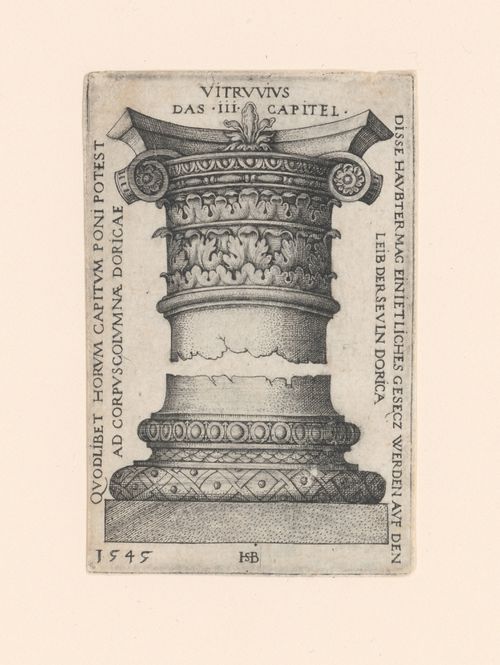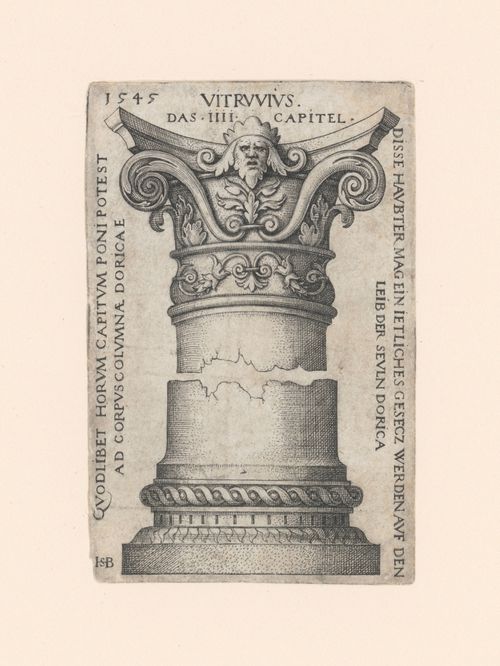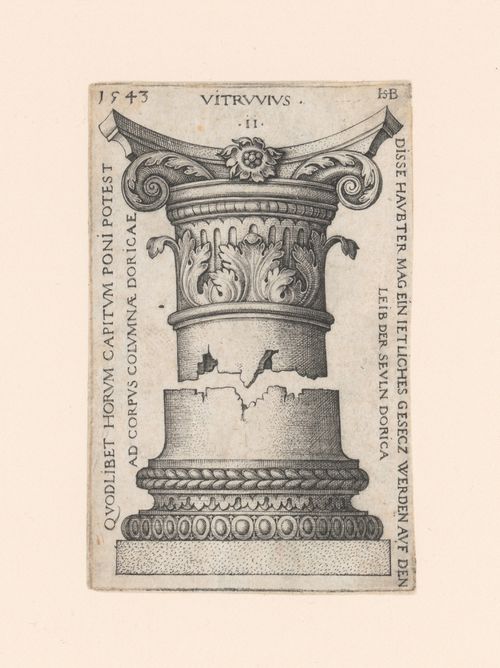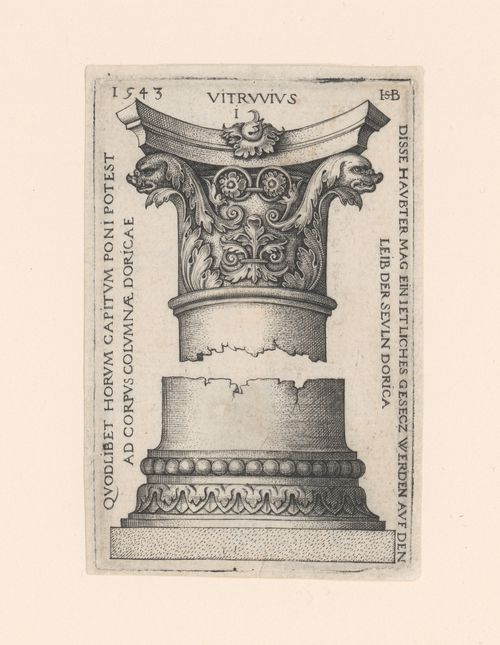Sub-series
AP149.S2.SS3
Description:
File related to various documents used as documentation and reference material for the Minimum Cost Housing Group's publications and research projects. The material in this file was produced between the late 1940s and 1999. The file contains an important collection of photocopies of book chapters, periodical, published reports, commercial leaflets, photographs and slides on various subjects related to the research field of the Minimum Cost Housing Group, and also a collection of maps of cities planning in India. The published reports in this series include the following: - Assessment of construction materials for use in emergency housing carried out on behalf of OXFAM (An) / A.K. Green - Brazil : sites and services project: staff appraisal report / World Bank - Cocoon / Hollingshead - Evaluation report on the village sanitation scheme of the Gandhi Smarak Nidhi in Maharashtra / Programme Evaluation Organisation, Planning Commission Govt. of India - International Drinking Water Supply and Sanitation Decade : end of decade review (as at December 1990) (The) (World Health Organization) - Lucknow urban development project : an approach document / Lucknow Development Authority - Preliminary investigations into the use of atomised sprays for handwashing and showering / T.C. Porter and M.E. Rump (Building Research Establishment Note) - Project completion report: India: Madhya Pradesh Urban Development Project (loan 2329-IN) (World Bank) - Racing alone: a visionary architect's quest for houses made with earth and fire / Nader Khalili (advertisement brochure for a book, including text of introduction; actual book in CCA collection) - Reflexiones sobre el tema de la vivienda (CENAC) - Report on toilet units / J.W. Grainge and J.W. Slupsky - Technology development for a zero-gravity whole body shower / A.A. Rosener [and 5 others] - Urban sector survey: Republic of Zambia (World Bank), v. 1-2 - Workshop on implications of the recommendations of National commission on urbanisation on planning practice and education / Department of Urban and Regional Planning, School of Planning and Architecture, New Delhi
late 1940s-1999
Reference and research for publications
Actions:
AP149.S2.SS3
Description:
File related to various documents used as documentation and reference material for the Minimum Cost Housing Group's publications and research projects. The material in this file was produced between the late 1940s and 1999. The file contains an important collection of photocopies of book chapters, periodical, published reports, commercial leaflets, photographs and slides on various subjects related to the research field of the Minimum Cost Housing Group, and also a collection of maps of cities planning in India. The published reports in this series include the following: - Assessment of construction materials for use in emergency housing carried out on behalf of OXFAM (An) / A.K. Green - Brazil : sites and services project: staff appraisal report / World Bank - Cocoon / Hollingshead - Evaluation report on the village sanitation scheme of the Gandhi Smarak Nidhi in Maharashtra / Programme Evaluation Organisation, Planning Commission Govt. of India - International Drinking Water Supply and Sanitation Decade : end of decade review (as at December 1990) (The) (World Health Organization) - Lucknow urban development project : an approach document / Lucknow Development Authority - Preliminary investigations into the use of atomised sprays for handwashing and showering / T.C. Porter and M.E. Rump (Building Research Establishment Note) - Project completion report: India: Madhya Pradesh Urban Development Project (loan 2329-IN) (World Bank) - Racing alone: a visionary architect's quest for houses made with earth and fire / Nader Khalili (advertisement brochure for a book, including text of introduction; actual book in CCA collection) - Reflexiones sobre el tema de la vivienda (CENAC) - Report on toilet units / J.W. Grainge and J.W. Slupsky - Technology development for a zero-gravity whole body shower / A.A. Rosener [and 5 others] - Urban sector survey: Republic of Zambia (World Bank), v. 1-2 - Workshop on implications of the recommendations of National commission on urbanisation on planning practice and education / Department of Urban and Regional Planning, School of Planning and Architecture, New Delhi
Sub-series
late 1940s-1999
textual records
DR2021:0052:001-039
Description:
The papers in this collection are related to the participation of Barry Campbell in a project to create a 1:50 scale model for the Maison d'Artiste, an unbuilt project designed by architects Theo van Doesburg and Cor van Eesteren in 1923. The model, sponsored by lawyer Piet Sanders and Barry Campbell, was made by Frans Postma and was exhibited at the Stedelijk Museum De Lakenhal (2009-2010) and the Tate Modern (2010) as part of the exhibition "Van Doesburg and the International Avant Garde: Constructing a New World". In 2013, Barry Campbell, Frans Postma and Victor Veldhuijzen van Zanten donated the 1:50 model to Het Nieuwe Instituut/The New Institute in Rotterdam, the Netherlands (Piet Sanders, who died in September, 2012, was also named as a donor). A 1:75 scale model was made for each of the donors. Textual records in the collection include correspondence, a copy of the donor agreement, and a text by Bertus Mulder. Drawings include printouts of plans, elevations, sections, and perspectives. There are also photographs of drawings. Digital files consist of a panorama by Postma & Partner. The collection includes a printout of a photograph of Barry Campbell with the 1:50 model.
2007-2013
Barry Campbell papers related to a 1:50 scale model for the Maison d'Artiste
Actions:
DR2021:0052:001-039
Description:
The papers in this collection are related to the participation of Barry Campbell in a project to create a 1:50 scale model for the Maison d'Artiste, an unbuilt project designed by architects Theo van Doesburg and Cor van Eesteren in 1923. The model, sponsored by lawyer Piet Sanders and Barry Campbell, was made by Frans Postma and was exhibited at the Stedelijk Museum De Lakenhal (2009-2010) and the Tate Modern (2010) as part of the exhibition "Van Doesburg and the International Avant Garde: Constructing a New World". In 2013, Barry Campbell, Frans Postma and Victor Veldhuijzen van Zanten donated the 1:50 model to Het Nieuwe Instituut/The New Institute in Rotterdam, the Netherlands (Piet Sanders, who died in September, 2012, was also named as a donor). A 1:75 scale model was made for each of the donors. Textual records in the collection include correspondence, a copy of the donor agreement, and a text by Bertus Mulder. Drawings include printouts of plans, elevations, sections, and perspectives. There are also photographs of drawings. Digital files consist of a panorama by Postma & Partner. The collection includes a printout of a photograph of Barry Campbell with the 1:50 model.
textual records
2007-2013
Sub-series
Miscellanea
CI001.S1.D4
Description:
The three portfolios of "Croquis", originally attributed to Hubert Rohault de Fleury, but probably also including work by Charles, are particularly informative of the range of artistic and architectural interests of these architects. While some of the drawings in these portfolios may be travel sketches or based on travel sketches (Charles is known to have visited some of the locations depicted (1)), the majority are probably copied or adapted from books and prints. In some cases, these sources have been identified. The stylistic range of the drawings is eclectic; in addition to the expected Classical material, Gothic, Romanesque, Islamic, Exotic Revival (namely Etruscan and Egyptian), Renaissance and Baroque periods and styles as well as contemporary 19th century architecture are all represented. The subject matter is equally varied. DR1974:0002:032:001-066, two portfolios, includes arabesque ornament (some from Palazzo del Te and Palazzo Ducal in Mantua (2)), Islamic ornament motifs, tile patterns, Sicilian architectural subjects - mainly church interiors, and stonework and woodwork from Romanesque and Gothic structures . DR1974:0002:031:001-055, three portfolios, contains drawings of classical figures, Christian imagery and architectural sculpture from antique, medieval [?] and 19th century sources, sculpture from the 16th century sepulchral monument of Maximillian I, Italian Classical structures and contemporary classically-inspired subject matter including a number of Parisian fountains and monuments, and several English townhouses. DR1974:0002:030:001-065, four portfolios, includes drawings of Classical, Gothic and Exotic Revival buildings and interiors as well as a number of drawings of non-architectural subject matter including military subjects - fortification, armaments, soldiers, and revolutionary battle scenes - and topographic views. A folder of Italian views and buildings in this portfolio may have been intended for publication. The designs for interiors, Empire furniture, garden structures and several of the buildings are probably original designs by Hubert. (1) A description of Charles' travels based on his sketchbooks held by the Académie d'architecture is found in Académie d'architecture, 'Catalogue des collection' (Paris: Académie d'architecture, 1988) 35-36 and 230-241. (2) These drawings were copied from Wilhelm Zahn, 'Gemalte Ornamente von Julio Romano' (s.l., s.n, ca. 1833)., The three portfolios of "Croquis" were originally attributed to Hubert Rohault de Fleury, but probably also including work by Charles. The source and purpose of many of these drawings is unclear; some may be record drawings and travel sketches or based on travel sketches, but the majority are probably copied or adapted from books and prints. The stylistic range and subject matter of the drawings is broad and eclectic: arabesques, Islamic ornament, stonework and woodwork from Romanesque and Gothic structures (DR1974:0002:032:001-066); classical and Christian imagery, architectural sculpture from antique, medieval [?] and 19th century sources, Italian Classical structures, nineteenth century classically-inspired subject matter (DR1974:0002:031:001-055); non-architectural subject matter including military subjects, topographic views, and Italian views and buildings, possibly intended for publication (DR1974:0002:030:001-065). Portfolio, DR1974:0002:030:001-065 also includes interiors, Empire furniture, garden structures and Classical, Gothic and Exotic Revival buildings, some of which are probably original designs by Hubert Rohault de Fleury. Bibliography: - Bergdoll, Barry. "Hubert Rohault de Fleury: Cinquième Partie: Équisses et Dessins d'Ornament." 'CCA Research Report.' n.d. - Académie d'architecture (France). 'Catalogue des collections' (Paris: L'Academie, 1988), 35-37 and 230-241.
[1800-1868]
Miscellanea
CI001.S1.D4
Description:
The three portfolios of "Croquis", originally attributed to Hubert Rohault de Fleury, but probably also including work by Charles, are particularly informative of the range of artistic and architectural interests of these architects. While some of the drawings in these portfolios may be travel sketches or based on travel sketches (Charles is known to have visited some of the locations depicted (1)), the majority are probably copied or adapted from books and prints. In some cases, these sources have been identified. The stylistic range of the drawings is eclectic; in addition to the expected Classical material, Gothic, Romanesque, Islamic, Exotic Revival (namely Etruscan and Egyptian), Renaissance and Baroque periods and styles as well as contemporary 19th century architecture are all represented. The subject matter is equally varied. DR1974:0002:032:001-066, two portfolios, includes arabesque ornament (some from Palazzo del Te and Palazzo Ducal in Mantua (2)), Islamic ornament motifs, tile patterns, Sicilian architectural subjects - mainly church interiors, and stonework and woodwork from Romanesque and Gothic structures . DR1974:0002:031:001-055, three portfolios, contains drawings of classical figures, Christian imagery and architectural sculpture from antique, medieval [?] and 19th century sources, sculpture from the 16th century sepulchral monument of Maximillian I, Italian Classical structures and contemporary classically-inspired subject matter including a number of Parisian fountains and monuments, and several English townhouses. DR1974:0002:030:001-065, four portfolios, includes drawings of Classical, Gothic and Exotic Revival buildings and interiors as well as a number of drawings of non-architectural subject matter including military subjects - fortification, armaments, soldiers, and revolutionary battle scenes - and topographic views. A folder of Italian views and buildings in this portfolio may have been intended for publication. The designs for interiors, Empire furniture, garden structures and several of the buildings are probably original designs by Hubert. (1) A description of Charles' travels based on his sketchbooks held by the Académie d'architecture is found in Académie d'architecture, 'Catalogue des collection' (Paris: Académie d'architecture, 1988) 35-36 and 230-241. (2) These drawings were copied from Wilhelm Zahn, 'Gemalte Ornamente von Julio Romano' (s.l., s.n, ca. 1833)., The three portfolios of "Croquis" were originally attributed to Hubert Rohault de Fleury, but probably also including work by Charles. The source and purpose of many of these drawings is unclear; some may be record drawings and travel sketches or based on travel sketches, but the majority are probably copied or adapted from books and prints. The stylistic range and subject matter of the drawings is broad and eclectic: arabesques, Islamic ornament, stonework and woodwork from Romanesque and Gothic structures (DR1974:0002:032:001-066); classical and Christian imagery, architectural sculpture from antique, medieval [?] and 19th century sources, Italian Classical structures, nineteenth century classically-inspired subject matter (DR1974:0002:031:001-055); non-architectural subject matter including military subjects, topographic views, and Italian views and buildings, possibly intended for publication (DR1974:0002:030:001-065). Portfolio, DR1974:0002:030:001-065 also includes interiors, Empire furniture, garden structures and Classical, Gothic and Exotic Revival buildings, some of which are probably original designs by Hubert Rohault de Fleury. Bibliography: - Bergdoll, Barry. "Hubert Rohault de Fleury: Cinquième Partie: Équisses et Dessins d'Ornament." 'CCA Research Report.' n.d. - Académie d'architecture (France). 'Catalogue des collections' (Paris: L'Academie, 1988), 35-37 and 230-241.
File 4
[1800-1868]
DR1987:0344
Description:
- This engraving depicts a design for an order of architecture showing the capital and the base. Although the inscriptions refer to "This engraving depicts a dORICA[E]", this looks more like a variation on the composite order. - This print is one of a set of four prints of capitals and bases which were engraved by Hans Sebald Beham. Patricia Condon suggests that these prints were made for a general audience rather than for architects ('Ornament and Architecture', 29). Three of the prints in the CCA collection are from the collection of the Ducs d'Arenburg, while the provenance of the fourth print, DR1987:0342, is unknown.
architecture
1545
Design for the capital and base of a column
Actions:
DR1987:0344
Description:
- This engraving depicts a design for an order of architecture showing the capital and the base. Although the inscriptions refer to "This engraving depicts a dORICA[E]", this looks more like a variation on the composite order. - This print is one of a set of four prints of capitals and bases which were engraved by Hans Sebald Beham. Patricia Condon suggests that these prints were made for a general audience rather than for architects ('Ornament and Architecture', 29). Three of the prints in the CCA collection are from the collection of the Ducs d'Arenburg, while the provenance of the fourth print, DR1987:0342, is unknown.
architecture
DR1987:0345
Description:
- This engraving depicts a design for an order of architecture showing the capital and the base. Although the inscriptions refer to "This engraving depicts a dORICA[E]", this is not one of the traditional orders of architecture. - This print is one of a set of four prints of capitals and bases which were engraved by Hans Sebald Beham. Patricia Condon suggests that these prints were made for a general audience rather than for architects ('Ornament and Architecture', 29). Three of the prints in the CCA collection are from the collection of the Ducs d'Arenburg, while the provenance of the fourth print, DR1987:0342, is unknown.
architecture
1545
Design for the capital and base of a column
Actions:
DR1987:0345
Description:
- This engraving depicts a design for an order of architecture showing the capital and the base. Although the inscriptions refer to "This engraving depicts a dORICA[E]", this is not one of the traditional orders of architecture. - This print is one of a set of four prints of capitals and bases which were engraved by Hans Sebald Beham. Patricia Condon suggests that these prints were made for a general audience rather than for architects ('Ornament and Architecture', 29). Three of the prints in the CCA collection are from the collection of the Ducs d'Arenburg, while the provenance of the fourth print, DR1987:0342, is unknown.
architecture
DR1987:0343
Description:
- This engraving depicts a design for an order of architecture showing the capital and the base. Although the inscriptions refer to "This engraving depicts a dORICA[E]", this column looks more like a variation on the composite order. - This print is one of a set of four prints of capitals and bases which were engraved by Hans Sebald Beham. Patricia Condon suggests that these prints were made for a general audience rather than for architects ('Ornament and Architecture', 29). Three of the prints in the CCA collection are from the collection of the Ducs d'Arenburg, while the provenance of the fourth print, DR1987:0342, is unknown.
architecture
1543
Design for the capital and base of a column
Actions:
DR1987:0343
Description:
- This engraving depicts a design for an order of architecture showing the capital and the base. Although the inscriptions refer to "This engraving depicts a dORICA[E]", this column looks more like a variation on the composite order. - This print is one of a set of four prints of capitals and bases which were engraved by Hans Sebald Beham. Patricia Condon suggests that these prints were made for a general audience rather than for architects ('Ornament and Architecture', 29). Three of the prints in the CCA collection are from the collection of the Ducs d'Arenburg, while the provenance of the fourth print, DR1987:0342, is unknown.
architecture
archives
Level of archival description:
Fonds
Richard Henriquez fonds
AP059
Synopsis:
The Richard Henriquez fonds, 1962-2002, documents the professional career of architect and urban designer Richard G. Henriquez. More specifically, the fonds documents Henriquez’s architectural training at the University of Manitoba, his early career as an architect in Jamaica, and his career as a principal at the architectural firm Henriquez Partners Architects. The fonds contains approximately 8935 drawings (including reprographic copies), 106 panels, 100 photographs, 31 l.m textual records, 5 offset printing plates and 1 model.
1962-2002
Richard Henriquez fonds
Actions:
AP059
Synopsis:
The Richard Henriquez fonds, 1962-2002, documents the professional career of architect and urban designer Richard G. Henriquez. More specifically, the fonds documents Henriquez’s architectural training at the University of Manitoba, his early career as an architect in Jamaica, and his career as a principal at the architectural firm Henriquez Partners Architects. The fonds contains approximately 8935 drawings (including reprographic copies), 106 panels, 100 photographs, 31 l.m textual records, 5 offset printing plates and 1 model.
archives
Level of archival description:
Fonds
1962-2002
DR1987:0342
Description:
- This engraving depicts a design for an order of architecture showing the capital and the base. Although the inscriptions refer to "DORICA[E]", this is not one of the traditional orders of architecture: the acanthus leaves on the capital suggest a Corinthian model while other details, such as the dolphin heads, suggest a more personal interpretation. - This print is one of a set of four prints of capitals and bases which were engraved by Hans Sebald Beham. Patricia Condon suggests that these prints were made for a general audience rather than for architects ('Ornament and Architecture', 29). Three of the prints in the CCA collection are from the collection of the Ducs d'Arenburg, while the provenance of this print is unknown.
architecture
1543
Design for the capital and base of a column
Actions:
DR1987:0342
Description:
- This engraving depicts a design for an order of architecture showing the capital and the base. Although the inscriptions refer to "DORICA[E]", this is not one of the traditional orders of architecture: the acanthus leaves on the capital suggest a Corinthian model while other details, such as the dolphin heads, suggest a more personal interpretation. - This print is one of a set of four prints of capitals and bases which were engraved by Hans Sebald Beham. Patricia Condon suggests that these prints were made for a general audience rather than for architects ('Ornament and Architecture', 29). Three of the prints in the CCA collection are from the collection of the Ducs d'Arenburg, while the provenance of this print is unknown.
architecture
webpages
Take a Closer Look
The goal of this program is to study drawings from the Renaissance in the CCA collection.
Take a Closer Look
Actions:
Summary:
The goal of this program is to study drawings from the Renaissance in the CCA collection.
webpages




